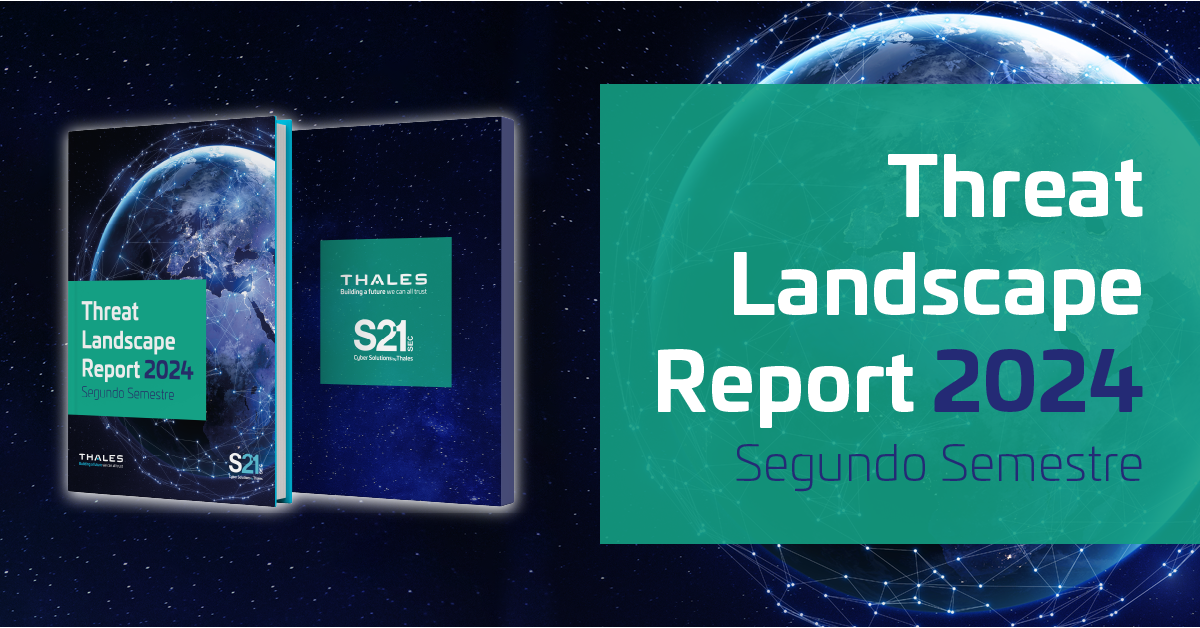Quick links:
Threat Landscape Report 2024 by Thales Cyber Threat Intelligence
In the second half of 2024, the global cybersecurity landscape has seen a surge in sophisticated cyber threats targeting industries, governments, and critical infrastructure. Thales, a leader in cybersecurity solutions, has compiled a comprehensive Threat Landscape Report based on data gathered by its expert Cyber Threat Intelligence team. This report provides critical insights into the evolving tactics, techniques, and procedures (TTPs) used by cybercriminals, as well as the most prominent trends observed in attacks over the past six months.
Key Findings in the 2024 Cyber Threat Landscape:
Surge in Ransomware Attacks and Double Extortion Tactics: Ransomware attacks have continued to escalate, with cybercriminals increasingly using double extortion strategies. In these attacks, threat actors not only encrypt victims' data but also steal sensitive information, threatening to release it unless a ransom is paid. High-profile industries, including healthcare, finance, and energy, have become primary targets. Organizations must prioritize advanced ransomware protection and incident response to safeguard sensitive data from such threats.
Increase in Supply Chain Cyber Attacks: Supply chain cyber attacks have seen a significant rise, with attackers exploiting vulnerabilities in third-party vendors and service providers. These attacks allow hackers to infiltrate an organization's infrastructure indirectly. This growing trend highlights the importance of securing the entire supply chain and implementing thorough third-party risk management practices to prevent supply chain vulnerabilities.
Nation-State Cyber Espionage and Cyber Warfare: Nation-state cyber activities have intensified, particularly in politically motivated cyber espionage and infrastructure disruption. State-sponsored threat actors use advanced persistent threats (APTs) to target government agencies, defense contractors, and critical infrastructure. Organizations must adopt comprehensive threat detection and response strategies to mitigate the risk of nation-state cyberattacks.
Exploitation of IoT and OT Vulnerabilities: As the adoption of Internet of Things (IoT) and Operational Technology (OT) devices expands across sectors like manufacturing and logistics, cybercriminals are increasingly exploiting vulnerabilities in these systems. The report stresses the need for enhanced IoT security and OT cybersecurity to safeguard industrial environments from cyber attacks that target critical, interconnected systems.
Cloud Security Risks and Misconfigurations: The shift to cloud environments has opened the door for increased cyber threats, particularly those resulting from cloud misconfigurations. Common misconfigurations in cloud services expose organizations to data breaches and unauthorized access. As businesses continue to migrate to the cloud, they must implement robust cloud security practices, focusing on proper configuration and access controls to prevent cloud misconfigurations from becoming exploitable vulnerabilities.
Emerging Cyber Threats in 2024:
AI-Powered Cyber Attacks: With the rise of artificial intelligence, cybercriminals are using AI to automate and improve the sophistication of their attacks. AI-powered cyber threats are increasingly adaptive, making them harder to detect. Businesses must incorporate AI-based cybersecurity tools and proactive defense measures to stay ahead of evolving cyber threats.
Cryptocurrency-Related Cybercrime: Cryptocurrency platforms have become prime targets for cybercriminals, with increasing instances of crypto-mining attacks, cryptocurrency fraud, and wallet thefts. Protecting cryptocurrency exchanges and digital wallets requires specialized security measures to combat this growing threat to financial assets.
Download the report and find out more about the threats analysed and discovered by the Thales S21sec, part of Cyber Threat Intelligence team!
To download the complete document, click here.



